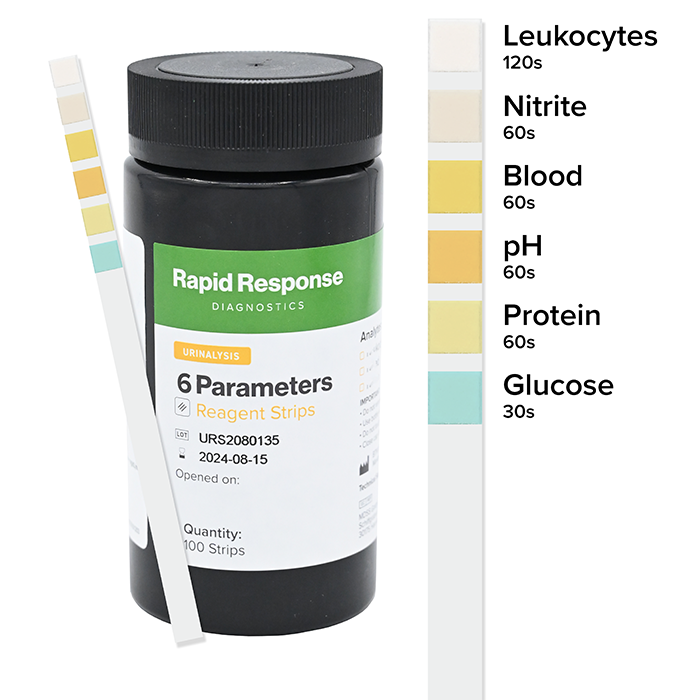
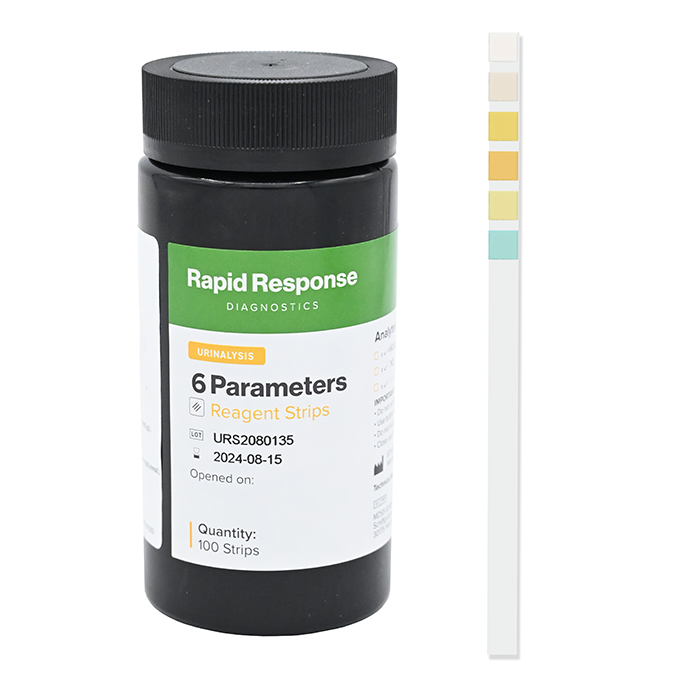
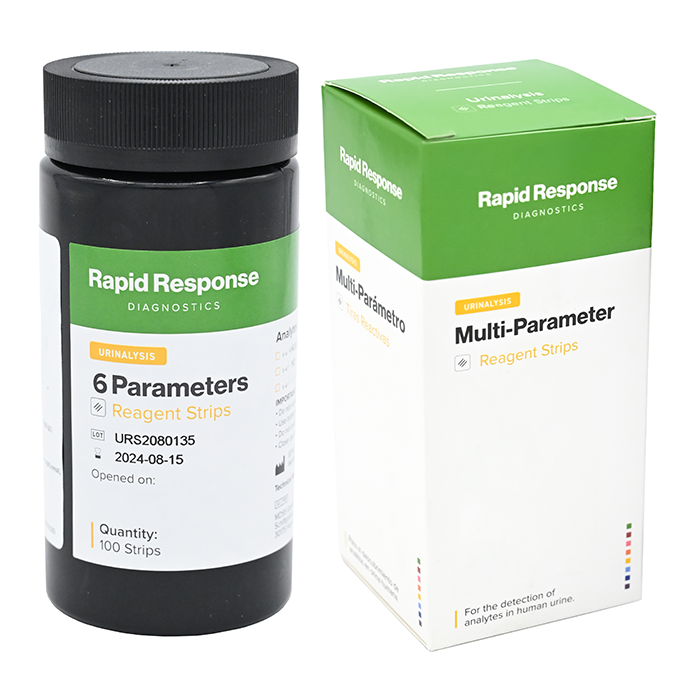
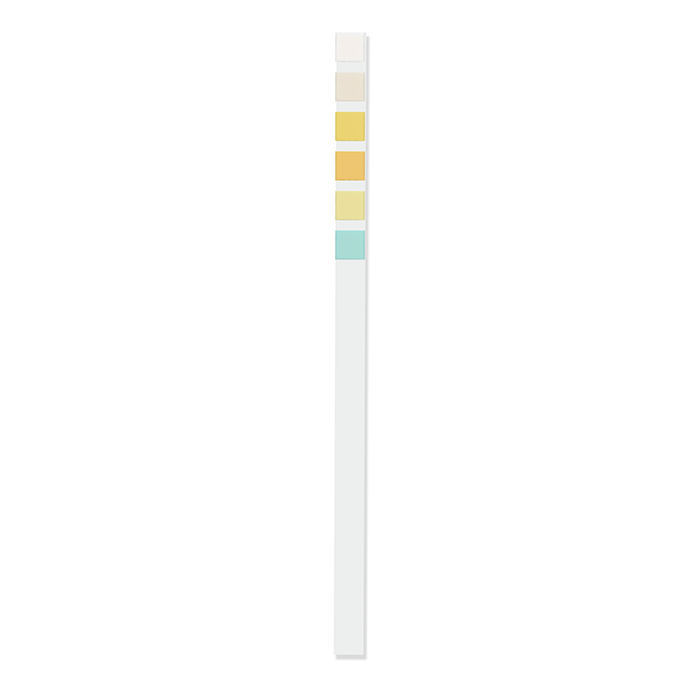




The Rapid Response™ Urinalysis Reagent Strip are qualitative and semi-qualitative dip-and-read test for the detection of urine analytes in human urine, to aid in the general evaluation of health and in the diagnosis and monitoring of metabolic or systemic diseases.
The 6 Parameter Rapid Response™ Urinalysis Reagent Strips simultaneously detects Glucose, Protein, pH, Blood, Nitrite and Leukocytes in urine.
Compatible with the Rapid Response™ Urine Analyzer U120. To learn more, visit the U121S product page.
The Rapid Response™ Urinalysis Reagent Strip are qualitative and semi-qualitative dip-and-read test for the detection of urine analytes in human urine, to aid in the general evaluation of health and in the diagnosis and monitoring of metabolic or systemic diseases.
The 6 Parameter Rapid Response™ Urinalysis Reagent Strips simultaneously detects Glucose, Protein, pH, Blood, Nitrite and Leukocytes in urine.
Compatible with the Rapid Response™ Urine Analyzer U120. To learn more, visit the U121S product page.
Simultaneously Detects 6 Urine Parameters
Fast & Reliable Results in 2 Minutes
User-Friendly

- Completely immerse the reagent areas of the strip in fresh, well-mixed urine.
- While removing the strip from the urine, run the edge of the strip against the rim of the urine container to remove excess urine.
- Compare the reagent areas to the corresponding color blocks on the canister label at the specified times.
Instructions simplified for illustrative purposes. Always read and follow the product insert or user manual before use.

Test with the Rapid Response™ U121S Urine Analyzer.
- Scan the barcode on the side of the canister or type the code into the U121S Urine Analyzer using the touchpad
- Completely immerse the reagent areas of the strip in fresh, well-mixed urine.
- Insert the strip into the U121S Urine Analyzer.
- Wait for the U121S to print the results.
To learn more visit the U121S product page.
Glucose (GLU) 30 Seconds
Detects glucose as low as 50-100 mg/dL (2.5-5 mmol/L).
Glucose should not be detected in normal urine. Small amounts of glucose may be excreted by the kidney.1 Glucose concentrations as low as 100 mg/dL may be considered abnormal if results are consistent.
Expected Results: Negative
Protein (PRO) 60 Seconds
Detects albumin as low as 7.5-15 mg/dL (0.075-0.15 g/L).
1-14 mg/dL of protein may be excreted by a normal kidney.3 A color matching any block greater than trace indicates significant proteinuria. Clinical judgment is required to evaluate the significance of trace results.
Expected result: Negative
pH 60 Seconds
Permits the quantitative differentiation of pH values within the range of 5-9.
This test is based on a double indicator system which gives a broad range of colors covering the entire urinary pH range. Colors range from orange to yellow and green to blue. The expected range for normal urine specimens from newborns is pH 5-7.2 The expected range for other normal urine specimens is pH 4.5-8, with an average result of pH 6.9.
Blood (BLO) 60 Seconds.
Detects free hemoglobin as low as 0.018-0.060 mg/dL or 5-10 Ery/μL in urine specimens with ascorbic acid content of < 50 mg/dL. Blood is often, but not invariably, found in the urine of menstruating females. The significance of a trace reading varies among patients and clinical judgment is required in these specimens.
Expected result: Negative.
Nitrite (NIT) 60 Seconds.
Detects sodium nitrite as low as 0.05-0.1 mg/dL in urine with a low specific gravity and less than 30 mg/dL ascorbic acid.
Nitrite is not detectable in normal urine.2 The nitrite area will be positive in some cases of infection, depending on how long the urine specimens were retained in the bladder prior to collection. Retrieval of positive cases with the nitrite test ranges from as low as 40% in cases where little bladder incubation occurred, to as high as approximately 80% in cases where bladder incubation took place for at least 4 hours.
Expected result : Negative
Leukocytes (LEU) 120 Seconds.
Detects leukocytes as low as 9-15 white blood cells Leu/μL in clinical urine.
Normal urine specimens generally yield negative results. Trace results may be of questionable clinical significance. When trace results occur, it is recommended to retest using a fresh specimen from the same patient. Repeated trace and positive results are of clinical significance. The detection of white blood cells in the urine suggests a possible UTI.
Expected result : Negative
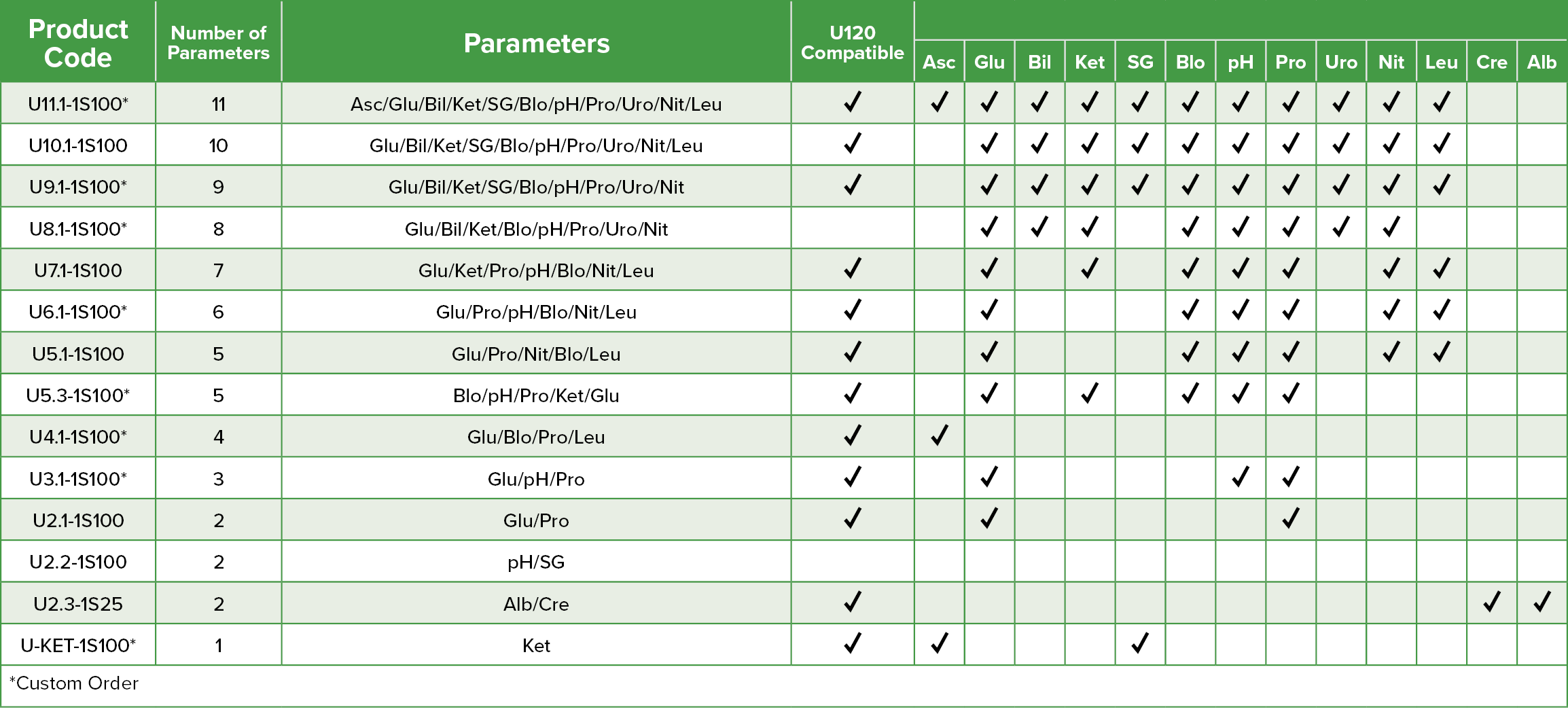
- Shchersten B, Fritz H. Subnormal Levels of Glucose in Urine. JAMA 201:129-132, 1967.
- Burtis CA, Ashwood ER. Tietz Textbook of Clinical Chemistry 2nd Ed. 2205, 1994.
- Jacobs & DeMott Laboratory Test Handbook 5th Edition, Lexi-Comp, Inc.: 870, 2001.
- Please note that certain products may only be available in specific regions; kindly consult with a sales representative for further information regarding product availability.
- The information provided on this website is for educational purposes only and should not be construed as medical advice. Always consult with a qualified healthcare professional regarding any medical concerns or conditions.
- Our products are intended for use as specified in the product documentation. It is important to carefully read and follow all instructions provided with the product.
